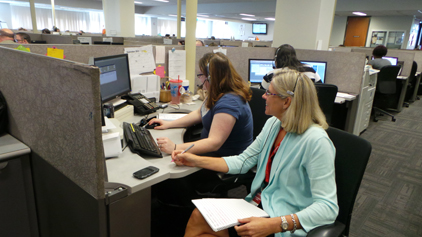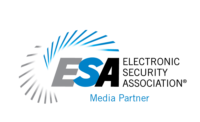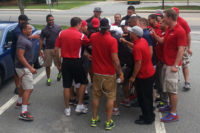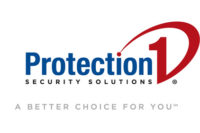
|
| By creating what it calls a culture of accountability for its employees, Protection 1 has been able to increase its retention rates while also lowering absenteeism. |
When CEO Tim Whall and GTCR turned Chicago-based Protection 1 back into a private company, they had a couple of goals: to leverage its existing national footprint and build up all its channels, specifically national accounts.
Whall also brought a renewed vision for the company, centered on the customer experience. The thought was that if Protection 1 took good care of its customers, everything else would take care of itself. The company’s work to achieve these new goals and transform its image have paid off and were instrumental in Protection 1’s selection as SDM’s Dealer of the Year Honoree in 2011 and Dealer of the Year in 2012 (link to: http://www.sdmmag.com/articles/88587-protection-1s-targeted-transformation-earns-dealer-of-the-year-award).
A large part of the company’s success over the last four years can be attributed to its efforts, led by Whall, to build a culture of accountability, says Jamie Haenggi, Protection 1’s chief marketing officer. This effort is especially important for retaining “millennials,” who she says make up about 40 percent of the company’s employee base.
Before getting into the particulars, it’s important to explain just what a millennial is. There are a number of opinions on this, so an exact definition is hard to pin down, but this age group, sometimes referred to as generation Y, are those who were born between the early 1980s and either the late 1990s or early 2000s — essentially anyone who’s currently anywhere from their early teens to early 30s.
According to people who study these kinds of things, millennials tend to change jobs every one to two years, seek a job that allows them to work towards the greater good rather than simply for a paycheck, have very little tolerance for cumbersome processes and/or policies and desire flexibility in their job. While it might seem that accountability would be counterintuitive to these characteristics, Haenggi says millennials have actually thrived in Protection 1’s metric-driven culture.
That’s largely due to the nature of Protection 1’s business, which she says the company works hard to help all its employees understand.
“One thing that helps is the sense of purpose of working in the security business, which is an altruistic service around life safety,” Haenggi says. “Every call counts. Yes, 99 percent may be false, but you have to treat every one as if it’s THE one.”
Part of the training program for all employees is a video that features audio of calls to Protection 1 operators. Some can be hard to listen to, including one where a young boy is calling from a closet while an intruder is in his home. The video then shifts to a walkthrough of the company’s services, followed by callbacks on each of the previous calls — all of which had happy outcomes. The message is quite clear, Haenggi says.
“This is what your job is. Each call is an opportunity to create a happy outcome,” she says. “There are only a couple careers where you can go home and say you saved a life today.”
So how does the company overcome the aversion to metrics? By being open and straightforward with employees about what metrics are measured and, more importantly, why. That approach stems from a call center satisfaction survey Protection 1 conducted about two years ago, which showed a disgruntled attitude towards metrics, which created a disconnect between employees and the company, Haenggi says.
“We’re very aggressive about how we communicate up front about the metrics we hold employees accountable to and why they’re important. People want to get on with their day, so our operators need to have the ability to manage a call, handle the situation and get them off the phone,” she says. “Perfection may not be achievable, but it has to be a goal. Our employees have a right to know why metrics are important to our business, and how they translate to the customer experience. And they tend to buy in to metrics when they understand that.”
In addition, Protection 1 encourages employees to speak up when things don’t seem to be working or if they have ideas about how they could be done better. They can even email Whall, who Haenggi says takes the time to respond to every employee.
“As a front-line employee, they are the customer advocate. We encourage them to break through processes and policies that don’t work and empower them to bring ideas forward,” she says. “We tell them, ‘If you think something is dumb, tell us. Don’t pretend that we can’t be dumb.’”
Primarily as a result of its efforts, Protection 1 has dropped its turnover and absenteeism, says Betsy Scott, Protection 1’s vice president of human resources.
“With retention, we’re ahead of the game. In our call center, we’ve dropped turnover by 50 percent,” she says. “We communicate within the center itself and hold each other accountable so they understand that when two or three people call out, it affects everyone. By engaging our employees and helping them feel like they’re part of something bigger than themselves, we’ve been able to cut absenteeism by 22 percent. We were at 35 percent last year, well below the industry average.”
Education, whether in the form of in-person coaching or taking one of the 100-plus courses available online through the company’s learning management system, also has been a key factor, Scott says.
“We’re investing in our employees and taking a team approach by stressing engagement where the leaders are truly coaches, which makes it easier for employees to provide feedback. And millennials respond to that because they have an opportunity to be an innovator,” she says. “On a weekly basis at our call centers, there’s an opportunity for a coaching session focused on metrics, which ones they may have missed, and creating an action plan. It’s also a chance for a conversation between a supervisor and the employee to understand what the employee is up against and how the supervisor can help.”
While accountability seems to be a natural fit in a call center environment, it also extends to Protection 1’s relatively new summer door-knocking program. Over the years, these programs have earned a bad reputation thanks to sales reps who may have done whatever was necessary to close a sale, but Whall has made it his mission to break down that stereotype, even spending time on the road last summer to knock on doors himself (link to: http://www.sdmmag.com/articles/89496-protection-1-sets-out-to-change-summer-sales-model).
The program also has helped Protection 1 retain millennials, Haenggi says, by showing those who sign on as sales reps for the summer that there are opportunities for longer-term career within the company.
“We want them to understand that there’s a year-round opportunity to transition into a commercial sales rep role, even work on national accounts, where we’ve experienced 813 percent growth,” she says. “We have one employee who’s a millennial who started as a sales rep and is now a national accounts manager, so it can happen.”
The success of Protection 1’s initiatives aimed at helping employees not only understand but also buy in to Protection 1’s metrics-driven culture of accountability has been communication, Haenggi believes.
“It’s OK to hold people accountable. People want to be held accountable, so we have to be straightforward with metrics,” she says. “We tell our supervisors, ‘Until you’ve explained the metrics, how they’re calculated and why they’re important a thousand times, don’t stop.’ Then have the representative explain them back just to be sure they understand.”




